When you see the words “do you want to” and “snowman” in the same sentence you might just expect to break into a song as in a certain Disney film. However, the Snowman Trek is actually a very long and difficult trek through the Eastern Himalayan mountain range.

The hardest trek in the world?
The snowman trek is certainly the longest and most strenuous trek in Bhutan covering more than 300 km from the western part of Bhutan near Paro to central Bhutan near Bumthang. There are actually many shortcuts and diversions in the central area that can be used to shorten or lengthen the trek a few days but generally the completion time is about 25 days with 3 days of rest along the way.
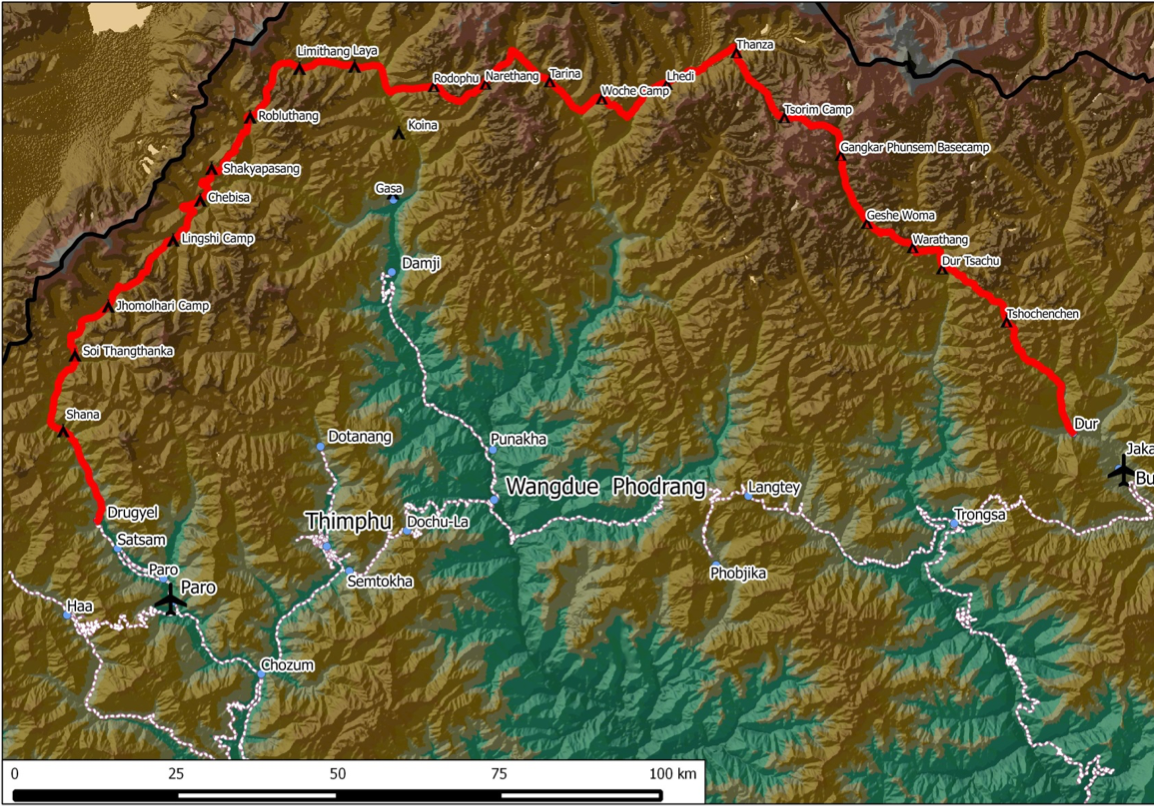
If you do some searching online, you will that most sites will refer to the Snowman trek as the hardest trek in the world. What makes it hard? Besides the fact that you are out on the trek for 25 days and need to be able to walk 300 or more kilometers, there is a continuous ascent and descent through 14 high altitude passes, a number of days requires an ascent of around 1000 meters, there are 4 passes that either cross or get very close to 5000 meters, the weather is very unpredictable and sometimes passes are blocked resulting in route changes or even abandonment of the trek. Some sources suggest that the completion rate of the trek is only around 50% due to either weather or fatigued trekkers. Even when the trek needs to be abandoned it could be the case that you will still need to walk several days to exit the trek and reach a place where you can be picked up.
Why take the challenge?
Why would anyone try to go on such a trek? I suppose it might be like the mountain climbers who say they climb mountains because they are there. The snowman trek offers some spectacular views of areas that few people have ever reached. Consider this view of a glacial lake along the way. If this photo had been taken on a clear day, the result would be even more spectacular
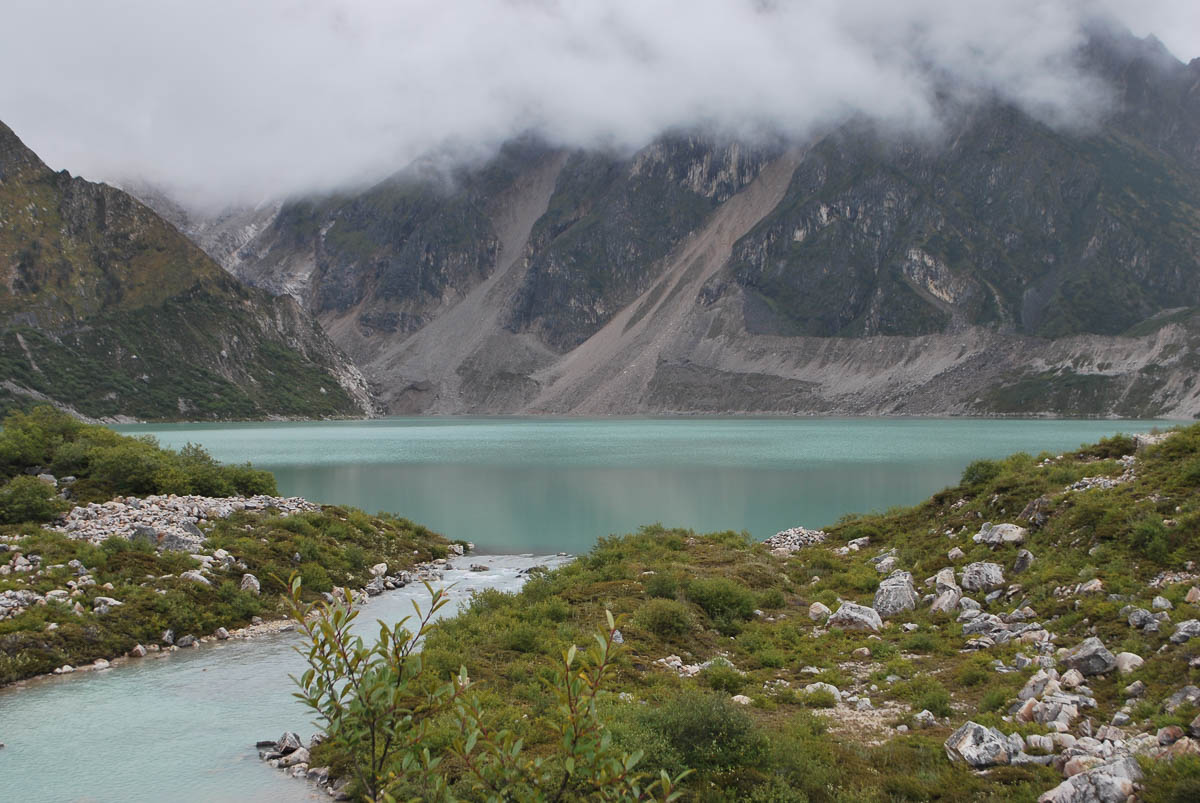
The number of people that you encounter along the trek is generally quite low. You will find some local yak herders and people living in the tiny villages, but generally unless you are starting this trek on the same day as another group, it is unlikely that you would see any other trekkers for the entire trek.
I’ve created a virtual fly through video allowing you to get an idea of the views that you see along the route.
Altitude Sickness
Beyond about 2500 meters above sea level, the amount of oxygen in the air we breathe is considerably reduced and your body struggles with the limited amount of oxygen. While this certainly sounds dangerous (and it can be) there are steps you can take so that your body acclimatizes to the reduced oxygen.
Acclimatization is normally done by not increasing your altitude by too much in a single day (a slow ascent). One rule that trekkers and mountaineers use is the idea of “climb high and sleep low”. Acclimatization is helped even more by increasing the altitude during the day but then descending back down to a lower for sleeping.
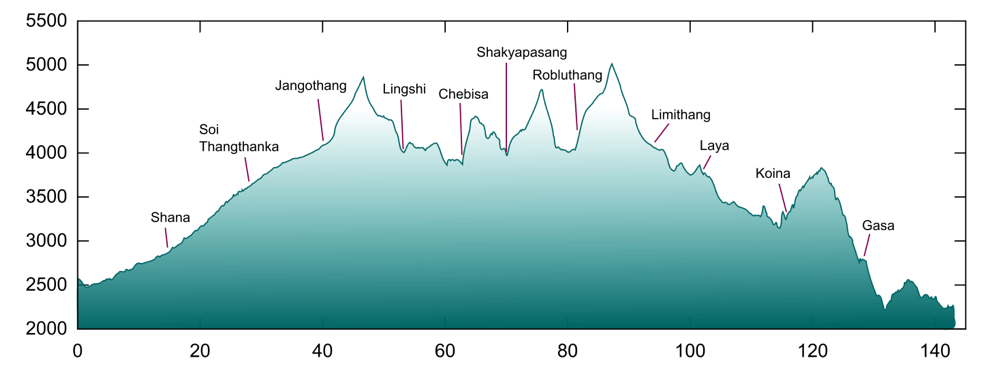
If you take a look at the elevation profile for the first 10 days of the Snowman trek, you will see that it is actually a good match for acclimatization. The first 3 days are steady and relatively slow in terms of increasing altitude: 400m on day 1, 700m on day 2, and 500m on day 3. When reaching Jangothang (Mount Jumolhari base camp as it is listed on some sites) there is a day of rest at 4100 meters. There are a number of high altitude day treks that can bring you up to anywhere from 4300 meters to 4900 meters and return you to the camp for sleeping. The next 10 days involves ascending very high passes with a couple in excess of 5000 meters but always returning to the 4000m level for sleeping.
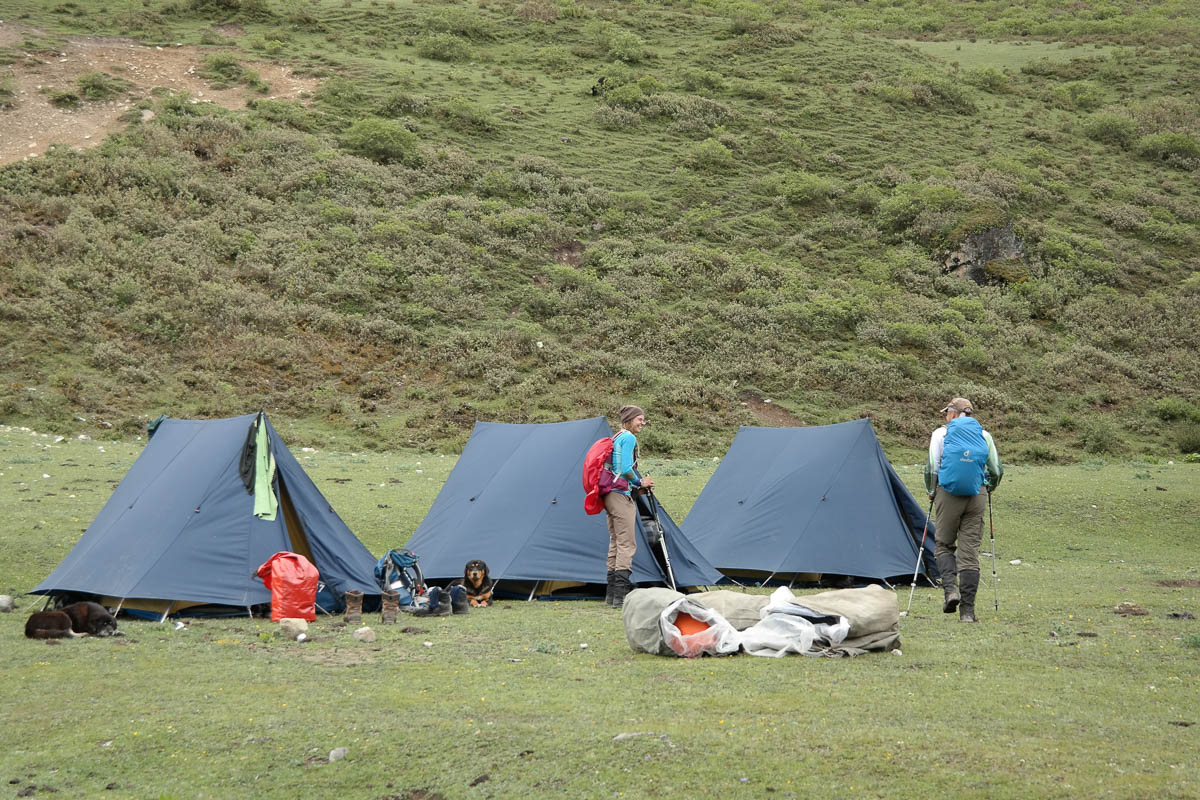
Support Team
Like all the other treks in Bhutan, the Snowman Trek is organized with a support team consisting of a guide who has lead the trek many times, cooks, assistants, and a horseman (with a number of horses or yaks). Unlike trekking through Nepal where a number of guest houses have been setup along the trekking route, the trekking routes through Bhutan have no services along the way. This means that all of the food and cooking needs to be carried for a large number of days; the horses are required to carry the food, the gas cylinders for cooking, a cooking tent, the sleeping tent, etc. The number of people in your group depends on the duration of trek and how many days needs to be provisioned for between resupplies (there are a few places where the supplies can be restocked).
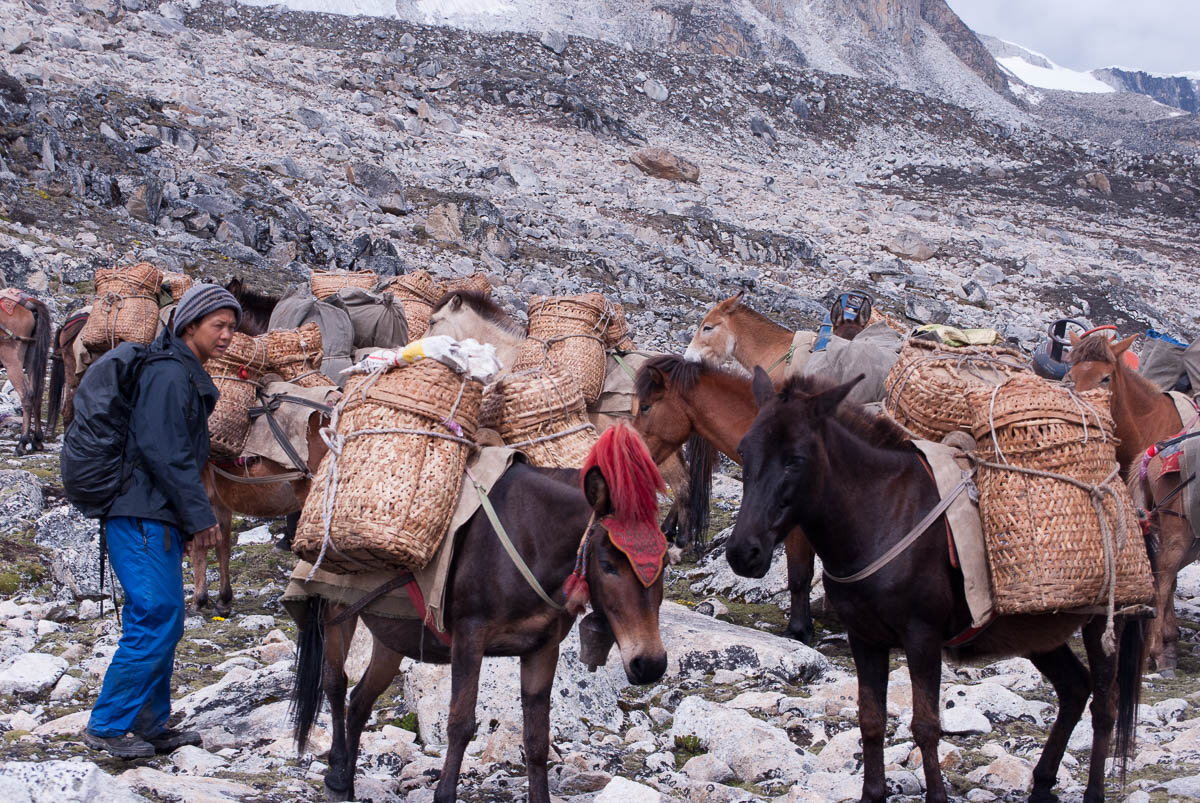
Insurance
Before going, get yourself some travel insurance and make sure that helicopter evacuation coverage is included. The area where the snowman trek takes place is vast and getting a helicopter to an extraction point is going to be expensive. We require that our visitors traveling to show us a copy of the insurance. We can offer this insurance as part of the package.
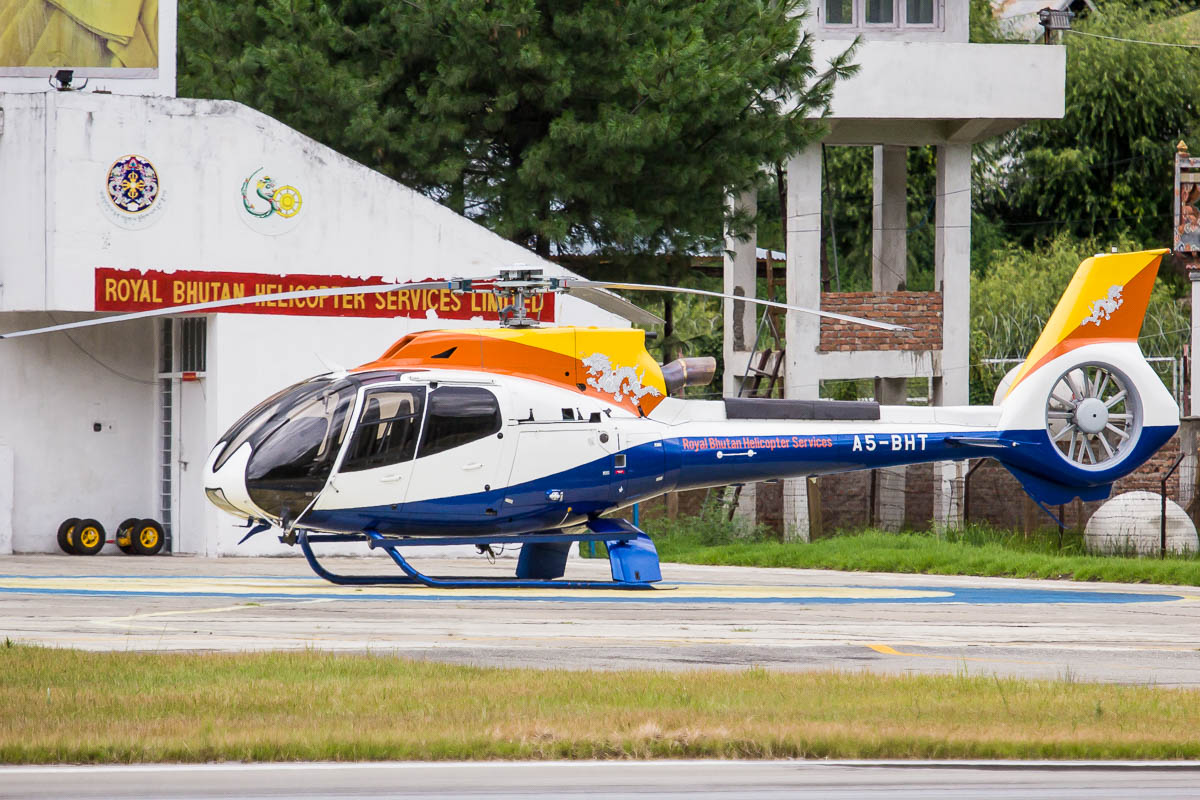
Experience Required
You would expect that a 25 day trek through some very remote parts of the world would required considerable amount of experience right? It turns out that you don’t need as much experience as you might expect. You need to be able to walk the 10 to 15 kilometers to reach the camp each night for a full month but having done lots of trekking in the past is less of a requirement. During one trip we had a person who had never trekked before complete the trip.
When to Start the Snowman Trek
The high altitude of the trek imposes limitations to the timing that you can go. The snow melts on the route usually by around April, but some years it could go be May before the route is opened. Therefore starting this in late April is possible but May improves the chance of completing the trek. The snow for the next winter begins in late October and the permits will not be issued beyond a certain date, therefore you should plan with a starting date between May and October. The later you start in this window is better because there will be less cloud coverage giving better views of the mountains and less chance of rain.

